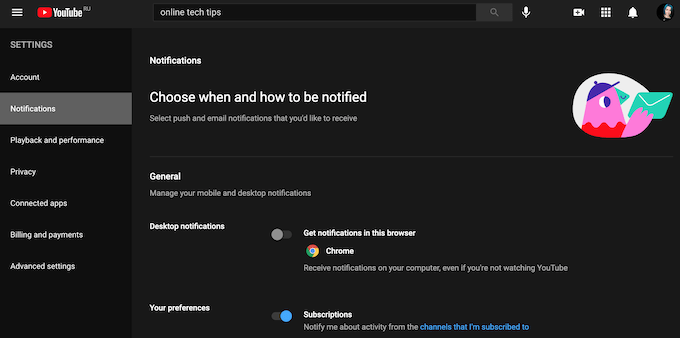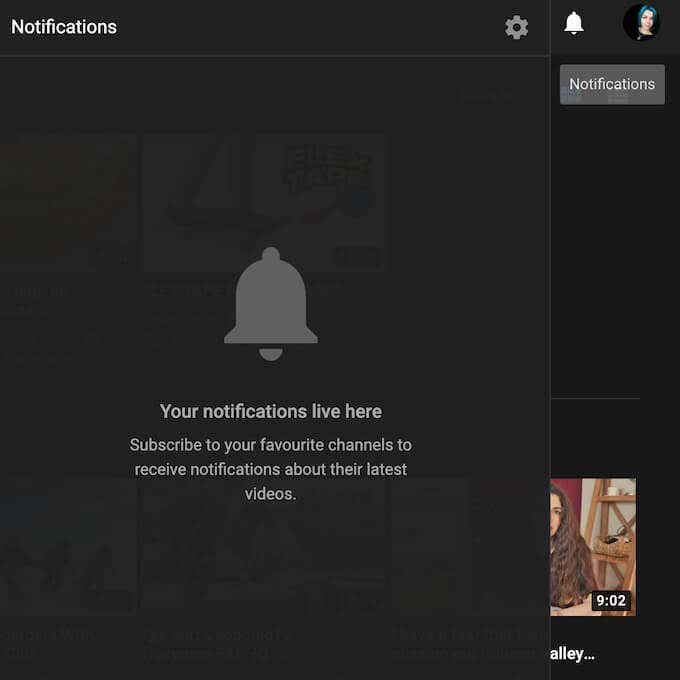
- #How to turn off email notifications on youtube how to
- #How to turn off email notifications on youtube Pc
#How to turn off email notifications on youtube how to
Is anyone reading this who is techy enough to use Linux but not enough to figure out how to tweak a Gmail setting on their own? I’d be interested to hear that.
#How to turn off email notifications on youtube Pc
Desktop notifications are boxes that show up in the corner of your window when a new email comes in, showing you part of the subject line and initial preview of the email.ĭesktop notifications are only applicable to users on a desktop platform, that is, a full-on PC or laptop using MacOS or Windows. It’s worth noting here that we’re talking about Gmail desktop notifications. Desktop Notifications Versus Push Notifications In that case, though, you may want to consider switching to a ticketing system that is more built to handle these kinds of workflows. I’ve known IT departments or support employees who live their entire lives in the inbox. That, or if your entire job is based on reading and managing email. Don’t do that, by the way Gmail automatically refreshes when new mail comes in regardless. The only time I would recommend email desktop notifications is when you’re waiting for a very important email and would be hammering the refresh button on your browser every few minutes anyways. If you spend a lot of time working away from email, having your focus broken and your attention diverted over and over is never a good thing.

Some of them just linger a bit too long, or worse, until you manually close them. Some of them are disruptive with sound or with strange interactions with your screen. They’re always a distraction when I’m working on something else. Personally, I kind of hate desktop notifications. If you clicked OK without reading what you were clicking – maybe you thought it was one of those dumb, ubiquitous cookie notifications – you have desktop notifications. When you’re logged on to a Gmail account in Chrome, Chrome will push a small pop-up that says “Enable desktop notifications for Gmail” with an OK and a No Thanks as options. If you’re wondering how these notifications turned on in the first place, chances are you hit an “ok” when you shouldn’t have. You just keep thinking of new things you need to get done and arranged, or working on conversations rather than work. Sure, your inbox might be a bit tidier, but maybe it won’t be. A notification comes in and suddenly 45 minutes have disappeared and no other work has been done. On the other hand, they’re purely annoying if you’re the kind of person with an out of control email habit. You can check it, file it away, respond as necessary, and move on with your day. Notifications are great if you want to know each time an email comes in. Part of it comes down to self-control, and a lot of people don’t have that self-control. I’ve written before about the time management necessary to succeed in business, and how email often eats up a lot of that time. There are pros and cons to this, to be honest. That way, you can respond to it immediately.

When monitoring an email inbox is part of your job, it’s a good idea to be able to have a notification pop up when something lands. With Gmail, the initial push was to include a productivity feature with desktop notifications. Let’s say you want to disable notifications for most websites, but there are some that you’d still like to receive notifications from, what then? Chrome actually allows users to set permissions for specific websites that they want to receive notifications from, so while you can block 99% of the websites you visit, you can still allow that 1% through.Related posts: Pros and Cons of Gmail Desktop Notifications Allow Notifications For Specific Websites If you wish to turn the feature back on, just repeat the steps above and you’re good to go. If you never intended to receive notifications in the first place, then this is a good option as it more or less disables it entirely. Now what this means is that websites will no longer be able to prompt you whether or not you want to receive notifications. Next to “ Site can ask to send notifications” toggle it off.

Under Permissions, select Notifications.

If you’d rather not be prompted at all whether or not you want to receive notifications, you can actually disable it for all websites involved: If you’d like to learn how to better manage Chrome notifications, such as how to turn it on or off for websites that you visit, you’ll be pleased to learn that it’s actually a rather simple and straightforward process that will take just a few minutes for you to setup. This is useful, for sure, but sometimes you might get too many notifications where it becomes annoying. Have you ever come across a website where you are prompted by Chrome whether or not you want to enable notifications for it? The point of these notifications, similar to those on our phones, is to let users know whenever the site has been updated.


 0 kommentar(er)
0 kommentar(er)
